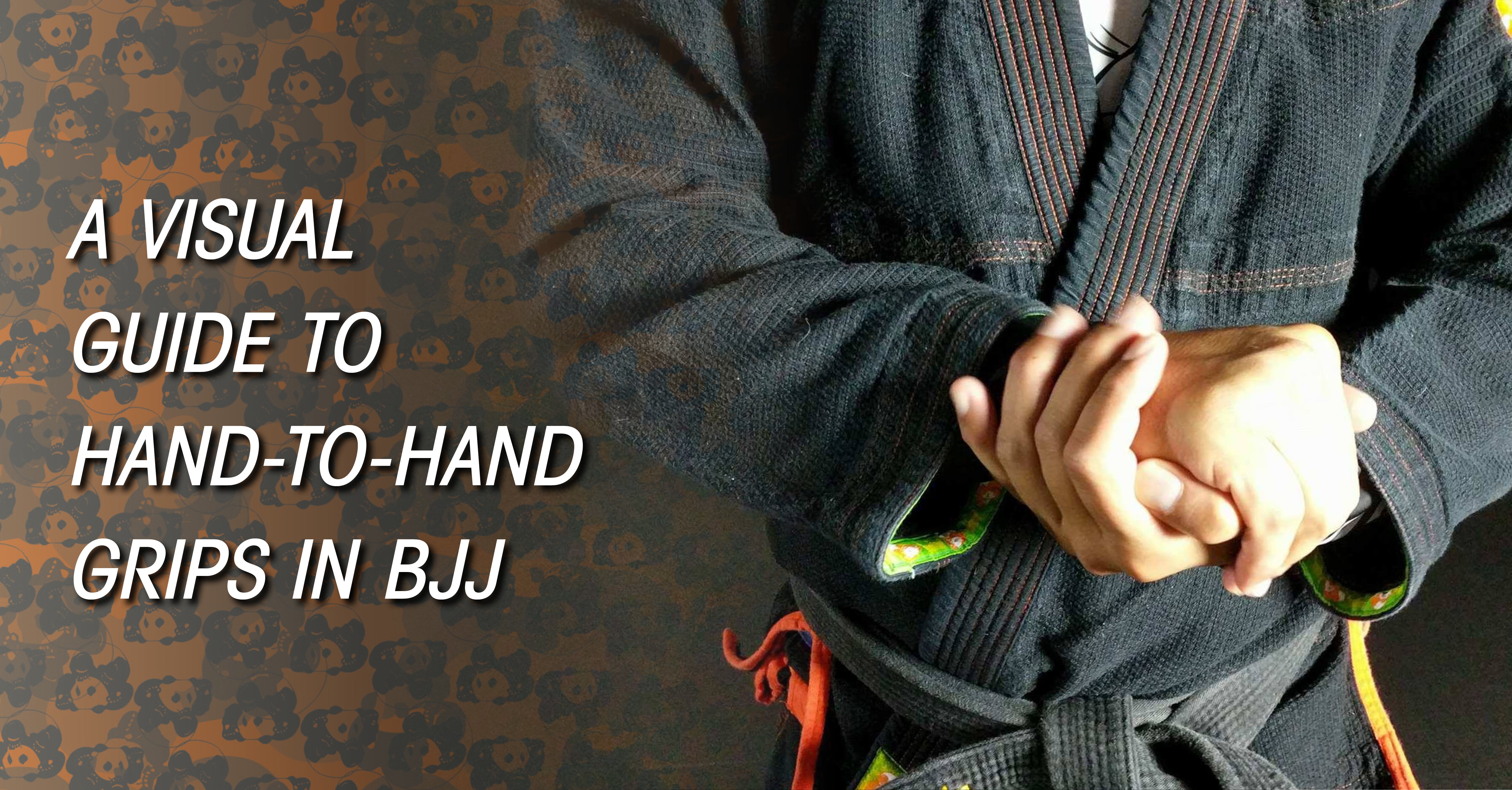
A Visual Guide to Hand-to-Hand Grips in BJJ

A reader of the Inverted Gear blog recently asked me if I could do a series of posts that define BJJ terms, much like a visual dictionary.
With the aid of my hand model Nelson and the power of GIFs, let's look at the right and wrong ways to do hand-to-hand grips.
Gable Grip
Somewhere along the line, BJJ took to calling this palm-to-palm configuration the "Gable grip," after the famous wrestler Dan Gable. The wrestlers who I have asked about it do not use his name, for what that's worth. This is sometimes mispronounced as the "cable grip." You see this grip used ubiquitously, from bodylocks to defending armbars to attack with straight armlocks--any time you need to put your hands together to do a technique.
Butterfly Grip
A variation on the Gable grip is to reach further across and grasp your forearms. The goal is to have the bends of wrists hook against each other to add to the strength of the grip. You see this used when a grappler gets double underhooks and wants to close the circle of their arms extra tight, such as in Greco throws or half guard.
Mistake: Thumb Out
The most common mistake made with the Gable grip is leaving the thumbs sticking out. This weakens the integrity by putting strain on the fingers and wrists and leaving a gap between the palms. To feel the difference for yourself, try both ways and fight yourself to keep the grips while pulling your arms apart.
Gokor Grip
A variation on the palm-to-palm grip is to stick the thumb between the index and middle finger. You will find this sometimes used in moves where it is important to bring the elbows together without the grip slipping apart, such as Darce chokes and Japanese neckties. I first saw Jeff Glover teach this. Nelson credits Gokor, so we went with that name. If you know a better nickname, please tell us. Update: We're told this is called the three finger grip or the Lebell grip, after grappling OG Judo Gene Lebell.
S-grip
When an opponent is too big for your arms to wrap enough to go palm-to-palm, you may be able to hook fingers-to-fingers in a s-grip. You can also use this when defending armbars, but make sure the arm that is being attacked is turned so the palm is away from you.
Seat Belt Grip
The seat belt grip is used most commonly from back control or the front headlock, as well as anklelocks and guillotines. As a rule, you want to hide the "choking" hand under the other hand so you make it harder for your opponent to grab and pull away, and to reinforce the choke or footlock when you go for the submission..
Mistake: Grabbing the Fingers
Don't make the mistake of grabbing your own fingers and squishing them. This puts too much strain on the fingers instead of the stronger wrist and forearm.
Interlaced Fingers
I cannot think of a single use of this grip* but new students will sometimes do it not knowing any better. Nelson and I included it here because we get infuriated when we see it in grappling.
*Okay, I can think of a single use:

Enjoy the combination of text and GIFs to explain BJJ? Then check out Artechoke Media, where Nelson and I both have released entire instructionals built around them with everything also taught in videos too. Nelson just released From Chile with Love and I made Mastering the Crucifix.
Other articles:
Quick links
Contact us
About us
Quality BJJ gear at fair prices, available all year. Founded in 2012 to provide an alternative to high-cost, limited edition gis. Dive into the BJJ lifestyle with us—join the Panda Nation!"
